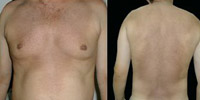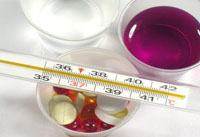What is muscular dystrophy? What are the causes and symptoms of dystrophy? How does muscle dystrophy?
Content
What is muscular dystrophy
Muscular dystrophy is actually called a group of hereditary diseases characterized by progressive symmetrical atrophy of skeletal muscles flowing without pain and loss of sensitivity in limbs. Paradoxically, but the affected muscles can increase in size due to the growth of connective tissue and fat deposits, creating a false impression of strong muscles.
There is still no means of healing muscle dystrophy. Distinguish the four main types of this pathology. Muscular dystrophy of Duzhenna (50% of all cases) is most often found. Usually the disease begins in early childhood and leads to death by 20 years. Muscular becker dystrophy develops slower, patients live over 40 years. The shoulder-blade-facial and end-length dystrophy, usually do not affect the life expectancy.
Causes of muscle dystrophy
Muscular dystrophy development. due to various genes. Muscular Dystrophy of the Backer Muscular Dystrophy is caused by genes in sex chromosome, and only men fall ill. The shoulder-blade-facial and end-lumbar dystrophy are not associated with sex chromosomes; They are ill and men and women.
Symptoms of muscle dystrophy
All varieties of muscle dystrophy cause muscle progressive atrophy, but they differ in the severity of the disease and the time of its appearance.
 Dystrophy Duzhenna manifests itself at an early age (between 3 and 5 years). Sick children go to rotate, hardly climb the stairs, often fall, can not run. When they raise their hands, their blades «behind» From the torso - this symptom was called «Wildorded blades». Usually a child with muscle dystrophy to 9-12 years old turns out to be chained to a wheelchair. The progressive weakness of the heart muscle leads to death from suddenly occurring heart failure, respiratory failure or infection.
Dystrophy Duzhenna manifests itself at an early age (between 3 and 5 years). Sick children go to rotate, hardly climb the stairs, often fall, can not run. When they raise their hands, their blades «behind» From the torso - this symptom was called «Wildorded blades». Usually a child with muscle dystrophy to 9-12 years old turns out to be chained to a wheelchair. The progressive weakness of the heart muscle leads to death from suddenly occurring heart failure, respiratory failure or infection.
- Although the Becker dystrophy has a lot in common with dystrophy of Duzhenna, it develops much slower. Symptoms appear at the age of about 5 years, but after 15 years, sick children usually still retain the ability to walk, and sometimes significantly later.
- The shoulder-blade facial dystrophy develops slowly, its current relatively benign. More often, the disease begins up to 10 years, but may appear in early adolescence. Children who subsequently find this pathology, they are poorly sucking in infancy; When they become older, they can not be folded lips as for a whistle, raise hands above the head. In patients with children, persons are distinguished by lacking in with a laugh or cry, sometimes marked facial expressions other than normal.
The doctor examines the child, asks questions about diseases
Family members and assign certain research. If anyone from relatives
Muscle dystrophy was sick, the doctor finds out how dystrophy led him. Analyzing
The data obtained can be predicted what the child expects. If the family is not
There were patients with muscle dystrophy, electromyography will allow evaluate the functioning
nerves in the affected muscles and establish the presence of muscle dystrophy; study
A piece of muscle tissue (biopsy) can show cell changes and availability
Fat sediments.
In medical centers equipped with the most modern
Equipment for Molecular Biological and Immunological Research,
can determine with accuracy whether the child will suffer with muscle dystrophy.
These centers may also examine parents and relatives on
The presence of the genes that determine the development of muscle dystrophy and muscular
Becker dystrophy.
Still do not have a means that could stop
Progression of muscle atrophy with muscle dystrophy. However, orthopedic
Devices, as well as therapeutic physical education, physiotherapy and surgery for correction
Contractures can save a child's mobility or adolescent for a while.
Members of families in which there were cases of muscle disease
dystrophy, should appeal to medical and genetic advice so that
Find out whether there is a risk of transmitting a disease to the future child.








